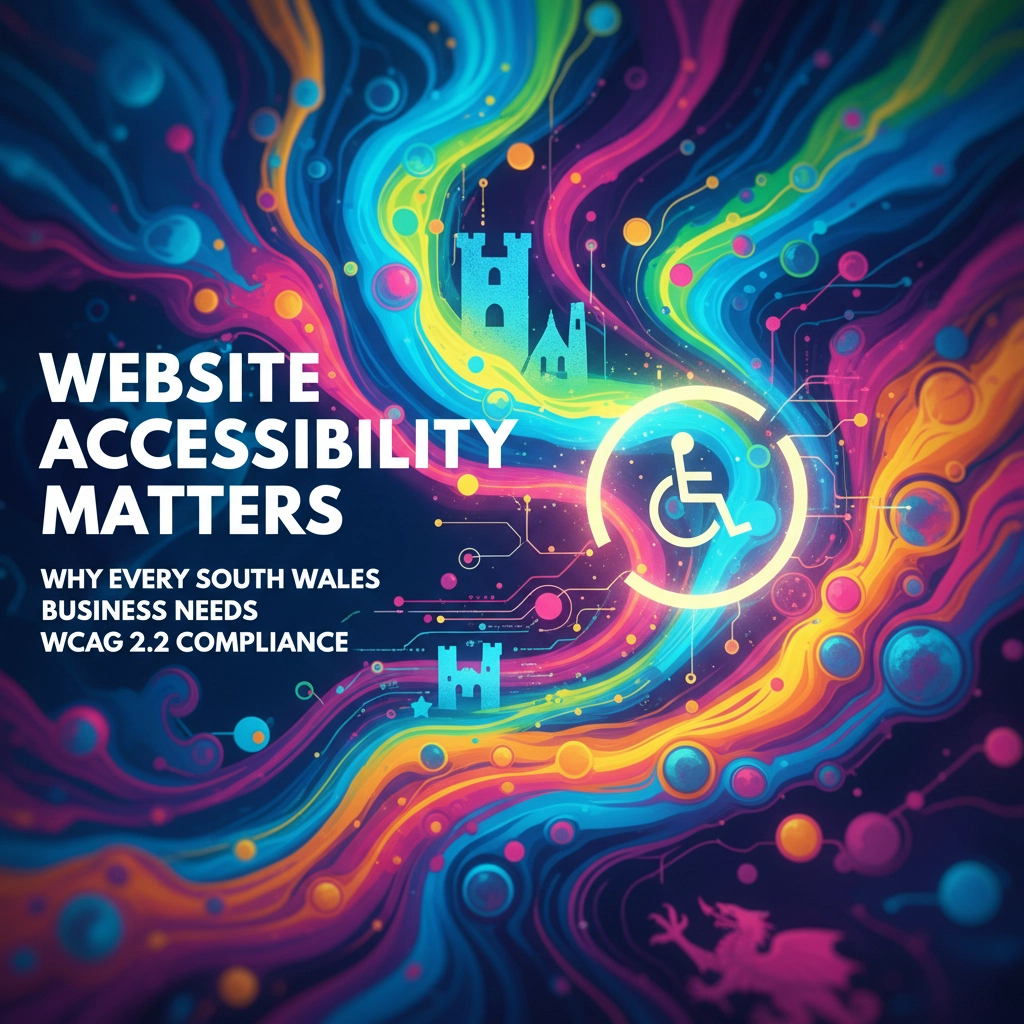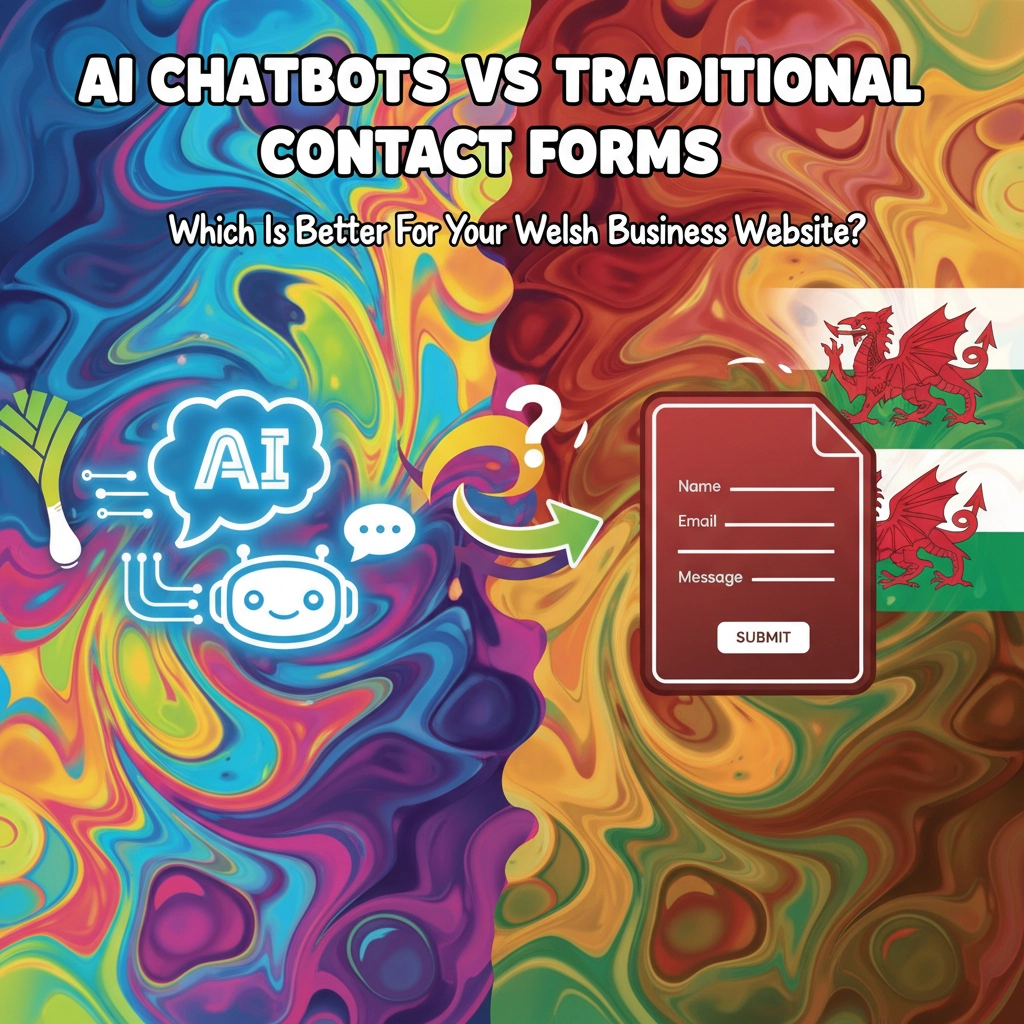Have you ever tried navigating a website with your eyes closed? Or attempted to use a site with just your keyboard, no mouse allowed? It's tougher than you'd think! Yet millions of people across the UK face these challenges every single day when trying to access digital services and information online.
If you're running a business in South Wales, there's some important news you need to know about website accessibility. The digital landscape is shifting, and WCAG 2.2 compliance isn't just a nice-to-have anymore: it's becoming essential for businesses that want to stay competitive, inclusive, and legally compliant.
What Exactly Is WCAG 2.2?
Let's start with the basics. WCAG stands for Web Content Accessibility Guidelines, and version 2.2 is the latest set of international standards for making websites accessible to everyone. Think of it as a comprehensive rulebook that ensures your website works brilliantly for people with all kinds of abilities and disabilities.
From October 2024, all UK Government public sector websites and mobile apps must meet WCAG 2.2 AA guidelines. This includes Welsh Government websites like GOV.WALES, which sets a pretty clear precedent for what's expected in our digital world.
But here's the thing: this isn't just about government websites. When public services raise the bar for accessibility, customers start expecting the same level of inclusivity from all the websites they visit, including yours.

The Four Pillars That Hold Everything Together
WCAG 2.2 is built on four rock-solid principles that make websites genuinely usable for everyone:
Perceivable means users must be able to see, hear, or otherwise sense the information you're presenting. This includes adding descriptions for images (so screen readers can explain what's shown), providing captions for videos, and ensuring there's enough contrast between text and background colours.
Operable ensures people can navigate your site using whatever tools work best for them: whether that's a mouse, keyboard, voice commands, or assistive technologies. Nobody should be locked out because they interact with technology differently than you do.
Understandable focuses on making your content clear and predictable. Use plain English, keep your navigation consistent across pages, and make sure your forms are properly labelled so people know exactly what information you're asking for.
Robust means your website works reliably across different browsers and assistive technologies, from screen readers to speech recognition software. It's about building a solid digital foundation that doesn't crumble when people access it in unexpected ways.
Why This Matters Specifically for South Wales Businesses
You might be wondering why businesses need to worry about standards that are legally required for government websites. Here's the reality: accessibility isn't just about ticking compliance boxes: it's about smart business strategy.
You're Missing Potential Customers: People with disabilities represent a significant portion of the UK population. When your website isn't accessible, you're essentially putting up a "Not Welcome" sign for customers who want to buy from you but can't navigate your site effectively.
Legal Risks Are Growing: While UK accessibility laws don't currently mandate WCAG compliance for all private businesses, the legal landscape is evolving. Companies that get ahead of this curve protect themselves from potential discrimination claims and demonstrate genuine commitment to equality.
Your Competition Is Catching Up: As public sector services in Wales embrace higher accessibility standards, customer expectations rise across the board. Businesses that prioritize accessibility now gain a competitive advantage over those treating it as an afterthought.
SEO Benefits Come Free: Many WCAG principles align perfectly with search engine optimization best practices. Proper heading structures, descriptive image text, clear navigation, and well-organized content help both assistive technologies and Google understand what your site offers.

The Business Benefits Beyond Compliance
Let's talk about the positive impact accessibility can have on your bottom line. When you make your website more accessible, you typically end up with:
- Clearer navigation that helps all users find what they need faster
- Better content organization that reduces bounce rates
- Improved mobile experiences since accessibility often overlaps with mobile usability
- Faster loading times from cleaner, more efficient code
These improvements benefit every single visitor to your site, not just those using assistive technologies. It's like renovating your shop to be wheelchair accessible and discovering that the wider aisles and better lighting make everyone's shopping experience more pleasant.
Getting Started: Your Roadmap to WCAG 2.2 Compliance
Ready to make your website more accessible? Here's how to approach it without getting overwhelmed:
Start with an Accessibility Audit: You can't fix what you don't know is broken. Begin by testing your current website against WCAG standards. There are automated tools that can quickly spot obvious violations, but remember: real accessibility requires testing with actual users, including those who rely on assistive technologies.
Focus on Level AA Standards: WCAG has three levels of compliance: A, AA, and AAA. Level AA is what UK accessibility laws require for public sector sites, making it the sensible target for businesses too. It represents a meaningful commitment to accessibility without requiring perfectionist-level implementation.
Tackle the Big Issues First: Start with the most impactful changes: adding alternative text to images, ensuring proper heading structures, improving form labels, and checking colour contrast ratios. These foundational fixes often resolve multiple accessibility barriers at once.

Creating Your Accessibility Statement
Even if you're not legally required to publish an accessibility statement, doing so demonstrates transparency and commitment to continuous improvement. Your statement should honestly assess where you currently stand, acknowledge any known issues, and outline your plans for addressing them.
Think of it as a roadmap that shows visitors you take accessibility seriously, even if you haven't achieved perfect compliance yet. Many Welsh organizations, including Business Wales, publish statements that acknowledge partial compliance while working toward full WCAG 2.2 AA standards.
Making Accessibility an Ongoing Process
Here's something crucial to understand: accessibility isn't a one-and-done project. Every time you add new content, update your design, or change functionality, you risk introducing new barriers for users with disabilities.
Build accessibility considerations into your regular website maintenance routine. Train your team to create accessible content from the start. Budget for ongoing accessibility testing and improvements. Why content is king for all websites becomes even more relevant when that content needs to work for everyone.
The Technical Side Made Simple
Don't let the technical aspects intimidate you. Modern web development practices and content management systems can handle much of the heavy lifting. When you're working with experienced web developers, they should be considering accessibility from the ground up, not trying to bolt it on afterwards.
If you're using WordPress or similar platforms, many themes and plugins now include accessibility features by default. However, choosing the right web hosting and ensuring your site loads quickly also contributes to accessibility: because a website that's too slow to load is effectively inaccessible to everyone.

Looking Ahead: Future-Proofing Your Digital Presence
The accessibility standards landscape will continue evolving, and businesses that establish good practices now will adapt more easily to future requirements. WCAG 2.2 represents the current best practice, but new guidelines and technologies are always on the horizon.
By embracing accessibility today, you're not just meeting current expectations: you're building a more inclusive, user-friendly, and resilient digital presence that serves your entire community effectively.
Ready to Make Your Website Accessible?
Website accessibility might seem complex, but you don't have to tackle it alone. Whether you need a comprehensive accessibility audit, want to redesign your site with WCAG 2.2 compliance in mind, or simply need guidance on where to start, professional web design support can make the process much smoother.
The investment in accessibility pays dividends through expanded customer reach, reduced legal risk, improved SEO performance, and the satisfaction of knowing your business truly welcomes everyone. Your South Wales customers deserve digital experiences that work for everyone: and your business deserves the competitive advantage that comes from getting accessibility right.
Don't let accessibility challenges hold your business back. Get expert guidance on making your website WCAG 2.2 compliant and start building a more inclusive digital presence today.



